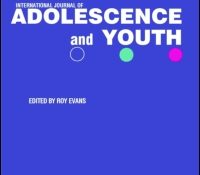eric.ed.gov har udgivet: The Ministry of Education in Malawi introduced a life skills education program with the intention to empower children with appropriate information and skills to deal with social and health problems affecting the nation, including the fight against HIV infections. This study investigated factors affecting the teaching of the life skills education in four primary schools in the Zomba district, Malawi. Cornbleth’s (1990) notions of the structural and social contexts and Whitaker’s (1993) identification of key role players in curriculum implementation framed the study. Data was collected through interviews with teachers and principals and observations of teachers’ lessons. Findings suggest that the teaching of life skills is constrained by a variety of social and structural contextual factors such as the poor conditions under which teachers are working; greater… Continue Reading →
Like this:
Like Loading...
tandfonline.com har udgivet en rapport under søgningen “Teacher Education Mathematics”: Community perceptions of the socio-economic structural context influencing HIV and TB risk, prevention and treatment in a high prevalence area in the era of antiretroviral therapy Link til kilde
Like this:
Like Loading...

tandfonline.com har udgivet en rapport under søgningen “Teacher Education Mathematics”: Abstract Abstract Previous prevention programmes have largely focused on the emotion regulation strategy of cognitive reappraisal. The present study is a feasibility trial that evaluates a prevention programme that teaches cognitive reappraisal, acceptance and problem-solving strategies. Ninety-six Year 10 high school students were randomly allocated to either the intervention or control condition. All participants completed scales evaluating emotion regulation difficulties, depression, anxiety and anger at baseline, post-intervention and at 6-month follow-up. In addition, the intervention condition completed a workshop evaluation questionnaire at post-intervention that included qualitative items. Mixed models for repeated measures and content analysis were used to analyse the data. Results suggested there were no statistical differences between the conditions although effect sizes suggested a small advantage favouring the… Continue Reading →
Like this:
Like Loading...

